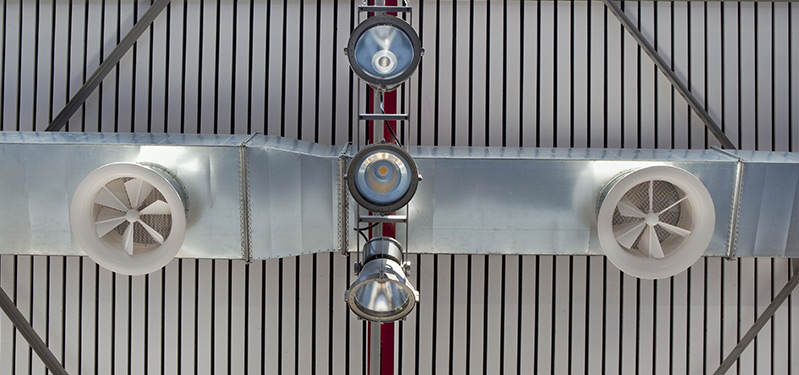Industrial HVAC Systems
Within the comprehensive project performance, the WOLFF GROUP Design Office offers designing, delivery and installation of ventilation, air conditioning and heating systems for industrial premises. Thanks to many years of experience in explosion protection, we are able to provide ventilation systems for explosion hazard zones. Moreover, the GROUP avails of specialists in heating and central heating systems designing.

Contact our engineer
We will answer questions about: offer, technical specification, delivery, assembly.
Scope of works offered – HVAC
- Design and installation of industrial ventilation systems (general and local), including ventilation in explosion hazard zones.
- Design and installation of piping for industrial heating and air-conditioning, including precision air-conditioning.
- Development and implementation of HVAC system controls.
- Development and implementation of solutions to reduce explosion risk.
- Preparing explosion risk assessment studies and explosion protection documents.
Purpose of ventilation at industrial premises
Ventilation in explosion hazard zones
The Regulation of the Minister of Infrastructure of 12 April 2002 on the technical conditions for buildings and their location provides:
‘§ 148.3. In a room where substances hazardous to health or combustible substances are released or to which such substances permeate from the outside an additional backup exhaust ventilation must be applied, started up from the inside and from the outside of the room, such as to ensure air change adequate to the room destination, in accordance with occupational health and safety regulations.’
Ventilation at industrial premises
The Regulation of the Minister of Infrastructure of 12 April 2002 on the technical conditions for buildings and their location provides:
‘§ 147.2. Mechanical or gravity ventilation must be provided in rooms intended for human occupancy, rooms without openable windows, as well as other rooms in which due to health, process or safety reasons air change is necessary.’
‘§ 148.4. In a room where the engineering process is a source of local emission of hazardous substances in impermissible concentrations or substances of burdensome smell, local capturing hoods must be provided and connected to the general ventilation system, so as to fulfil the requirements for the quality of internal environment in work zones, as specified in the occupational health and safety regulations.’
Explosion hazard means a possibility of origination in various conditions of mixtures of flammable gases, flammable liquid vapours, dust or fibres of flammable solid bodies with air, which explode under the influence of an ignition initiation factor, meaning that they are subject to violent combustion connected with increased pressure. An explosive atmosphere may, therefore, be created by gases, vapours, mists, fibres and dusts of substances emitted in rooms when mixed with air. One of the methods of eliminating or reducing the scope of an explosion zone is to apply an effective and efficient ventilation. Explosion risk limitation contributes to:
- higher staff safety,
- limitation of losses resulting from explosion consequences,
- limitation of project costs related to the necessity of adjusting technical equipment of a plant to the requirements of the zone where the equipment is to be installed.
Engineering processes may emit air pollutants in the form of solid particles, gases, vapours or aerosols. Also heat or steam emission may pose a problem. Air pollutants may cause:
- hazard to human health or safety resulting from irritating, allergenic, toxic, cancerogenic, radioactive, flammable or explosive properties, as well as a feeling of discomfort and ill disposition;
- explosions and fires as a result of exceeding the permissible concentrations of flammable or explosive substances;
- faster wear and tear, damage or failure of machines and equipment.
It is, therefore, necessary to provide proper working conditions at industrial premises, which includes not only air temperature adequate to staff physical effort or season of the year, but also maintenance of pollutants concentrations at a safe level, namely one that is lower than the highest permissible concentration (OEL). Such conditions are ensured by a properly designed ventilation system, which either dilutes or completely removes air pollutants.
Engineering processes performed at industrial premises often require maintenance of a highly precise microclimate. Controlled parameters are usually temperature, humidity and pollutants concentration in interior air. The required conditions may be maintained thanks to the use of ventilation and precision air-conditioning.



